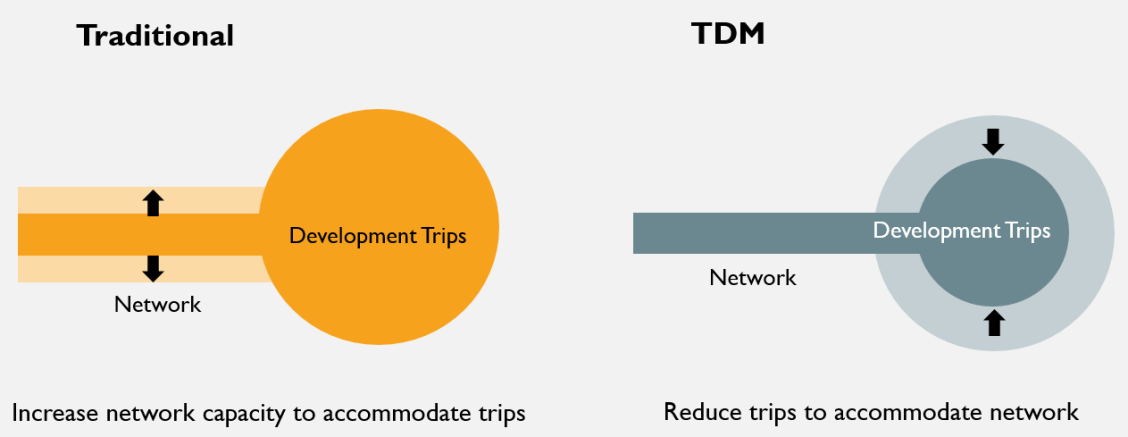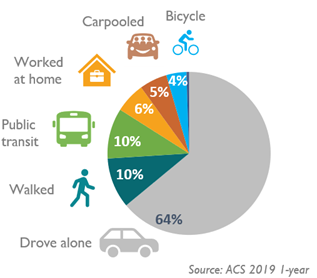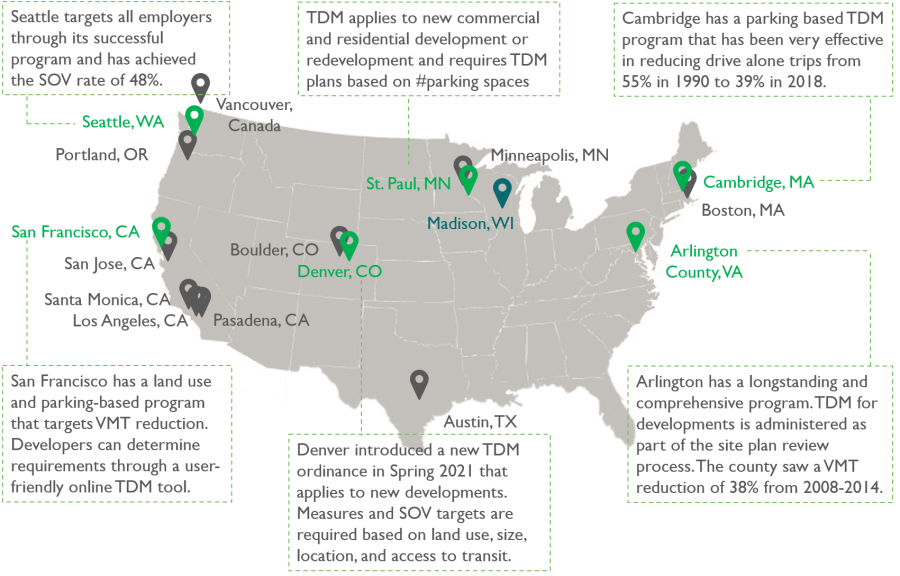TDM Program Overview
Developments meeting certain thresholds must comply with Madison's TDM regulations.
Imagine a community that was easy, safe, and environmentally friendly to navigate and take transit. One where you get to work easily by grabbing your bike from a bike parking facility or from a nearby bike share. One in which your employer-provided bus pass or bike share membership gets you to work and to your favorite park across town. One where your elevator ride down from your office informs you when your next bus will arrive. One where you’re less beholden to the flows of vehicle traffic to access work, culture, cuisine and community so that you can truly enjoy all Madison has to offer.
The City of Madison is working to make this imagined community a reality through our new and improved Transportation Demand Management (TDM) policy.
TDM is supported in the Imagine Madison Comprehensive Plan and the Madison Sustainability Plan. TDM is defined in the Madison General Ordinances as measures including “carpooling, vanpooling, public transit, bicycling, walking, telecommuting, and work schedules that reduce individual vehicle trips and promote alternatives to single occupant vehicle use especially at peak commuting times.”
For Madison and many other communities, the emphasis is on shifting travel to sustainable transportation options; such as transit, rideshare, biking, and walking. TDM strategies help us use a fixed amount of roadway capacity efficiently, and are a key factor in reducing emissions associated with Climate change.

Taking a TDM approach to transportation system management is the opposite of what communities throughout the US, communities have traditionally done. Historically, cities have taken a “Transportation Congestion Management Approach” - widening streets to accommodate development traffic. This has led to wider roadways that are expensive to maintain, and dangerous for cyclists and pedestrians. TDM flips the approach, incentivizing development to reduce the number of trips generated to fit within the existing transportation network.
Did you know?
TDM requirements have existed in Madison for over 20 years in Madison General Ordinances (MGO) 28.082, 28.066, 28.183, and 33.24.
The recently enacted MGO 16.03 provides a consistent and uniform way to implement TDM, reducing uncertainty and complexity for developers and decision makers.

For Residents
For Developers
TDM programs have been effectively implemented in cities throughout the nation. One example is Arlington Virginia, which between 2008 and 2014, Arlington documented an average weekday reduction in SOV trips of eight percent with a resulting reduction in VMT of 38 percent countywide. Madison has studied numerous plans throughout to country to inform its plan. These plans include cities of a variety of sizes and the best, most effective concepts from these programs have been incorporated into the City’s proposed program:

Developments meeting certain thresholds must comply with Madison's TDM regulations.
Process for Transportation Demand Management development.
Information about the requirements for Transportation Demand Management.
Form for developers to complete that details their projects TDM plan.
Answers to some of the most common questions about Madison's Transportation Demand Management (TDM)